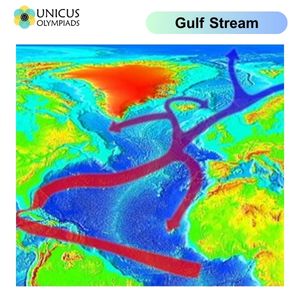

The Gulf Stream is a powerful, warm ocean current that flows from the Gulf of Mexico, along the eastern coastline of the United States, and across the North Atlantic Ocean towards Europe. It plays a critical role in regulating the climate of North America and Europe, influencing weather patterns, oceanic temperatures, and even ecosystems. In this article, we will explore the Gulf Stream, how it works, and its significant impact on global and regional climates.

The Gulf Stream is a warm and fast-moving ocean current that originates in the Gulf of Mexico, flows through the Straits of Florida, and then moves up the U.S. East Coast. It continues northeastward, eventually reaching the North Atlantic, where it splits into several branches that influence the weather and climate of Europe, the Arctic, and the Americas.
The Gulf Stream begins in the Gulf of Mexico, where it is fed by warm waters from the Caribbean Sea. As it flows northward along the eastern coast of the United States, it is shaped by the rotation of the Earth (Coriolis effect) and the geography of the ocean floor, moving into the Atlantic Ocean. The current reaches its strongest point off the U.S. East Coast before it continues across the Atlantic.
The Gulf Stream is a critical part of a larger global circulation pattern known as the thermohaline circulation or the “global conveyor belt.” This system involves the movement of warm surface waters from the tropics to the polar regions and the sinking of colder, denser water back to the deep ocean. The Gulf Stream is the upper branch of this conveyor belt, transporting warm water northwards, while cold water sinks in the North Atlantic and flows back toward the equator.
As the Gulf Stream moves across the North Atlantic, it gradually cools, releasing heat into the atmosphere, particularly during the winter months. This heat release helps moderate the climate of nearby regions, particularly in Western Europe, preventing extreme seasonal temperature variations.
Climate change poses a significant threat to the Gulf Stream and the larger thermohaline circulation. As global temperatures rise, the polar ice caps melt, adding freshwater to the oceans. This dilution of seawater can affect the density and salinity of the water, potentially weakening the Gulf Stream.